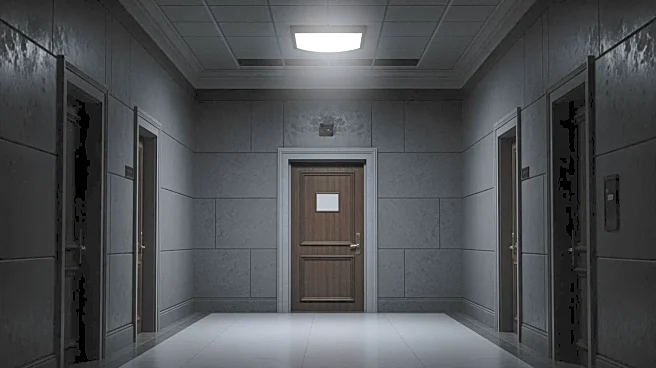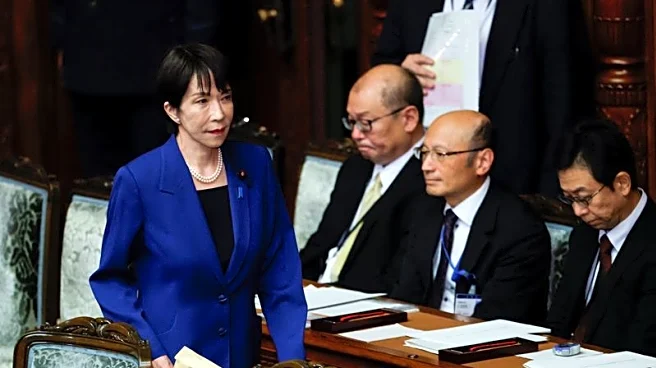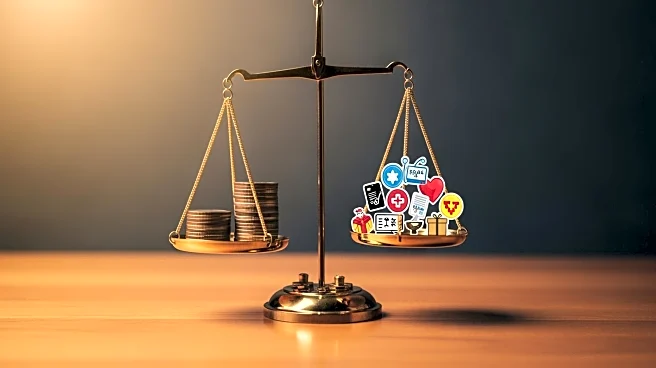What's Happening?
Recent analysis highlights the impact of tax cuts on federal revenues, focusing on historical examples and the 2017 tax cuts under President Trump. The article discusses how lowering or maintaining reasonable tax rates for top earners often leads to increased
federal revenues. This phenomenon is attributed to incentivizing wealth creation among high-income individuals, who are less likely to shelter income or reduce economic participation when tax rates are favorable. The analysis references the Laffer Curve, which suggests that there is an optimal tax rate that maximizes revenue without discouraging economic activity. The article also critiques the Congressional Budget Office's (CBO) projections, arguing that they often underestimate the positive economic impacts of pro-growth tax policies.
Why It's Important?
The discussion on tax cuts and revenue is significant as it influences public policy and economic strategies. Proponents argue that lower tax rates can stimulate economic growth by encouraging investment and entrepreneurship, particularly among high-income earners. This can lead to broader economic benefits, including job creation and increased consumer spending. However, critics caution that such policies may disproportionately benefit the wealthy and lead to increased income inequality. The debate also impacts fiscal policy, as governments must balance tax revenues with public spending needs. Understanding the effects of tax cuts is crucial for policymakers aiming to foster economic growth while ensuring equitable tax burdens.
What's Next?
The permanence of the 2017 tax cuts under President Trump suggests ongoing debates about their long-term economic impact. Future discussions may focus on adjusting tax rates to find the optimal balance that maximizes revenue without stifling economic activity. Policymakers may also consider alternative strategies to address income inequality and ensure that tax policies benefit a broad spectrum of the population. The effectiveness of these tax cuts will likely be evaluated against economic indicators such as GDP growth and federal revenue trends. Stakeholders, including economists and political leaders, will continue to analyze and debate the implications of these policies.
Beyond the Headlines
The broader implications of tax cuts extend to ethical and social dimensions, particularly concerning income distribution and economic equity. The debate over tax policy often reflects deeper ideological divides about the role of government in wealth redistribution and economic regulation. Additionally, the impact of tax cuts on public services and infrastructure investment remains a critical consideration, as reduced revenues could limit government capacity to fund essential programs. The ongoing discourse around tax policy highlights the need for comprehensive approaches that balance economic growth with social responsibility.













